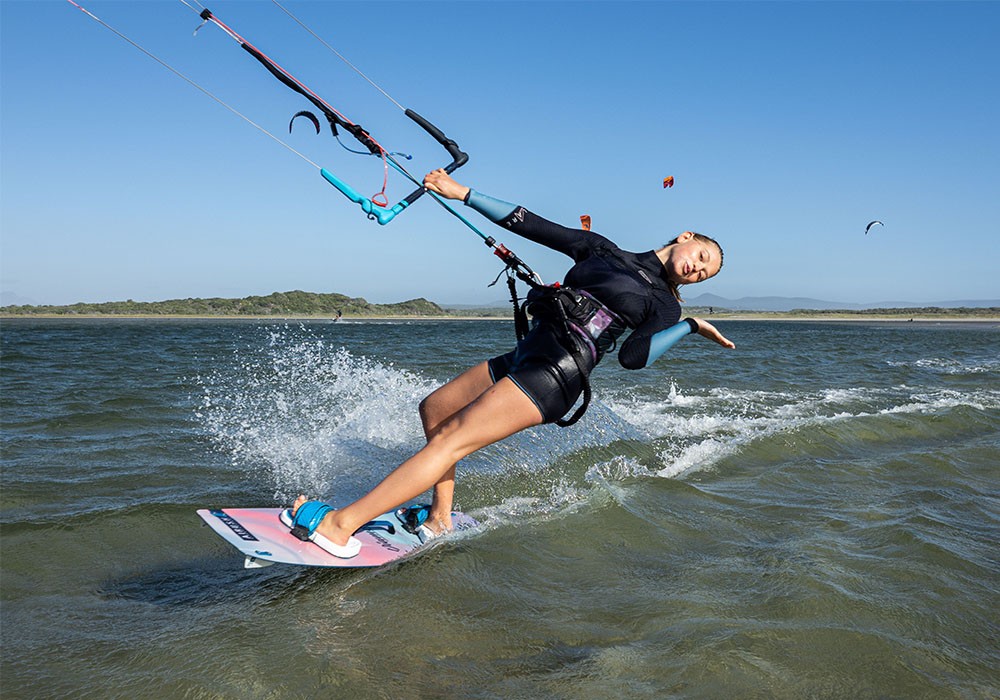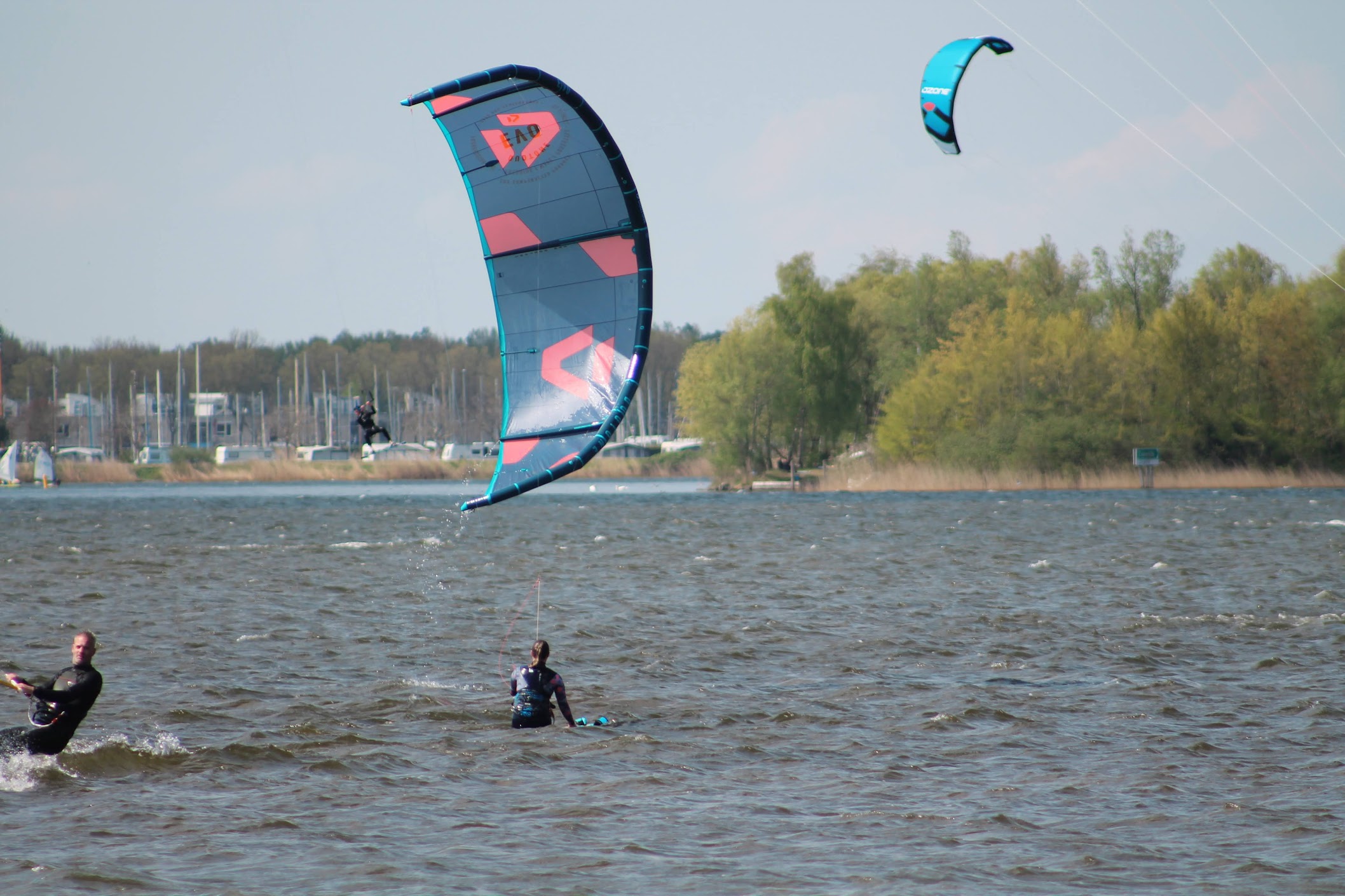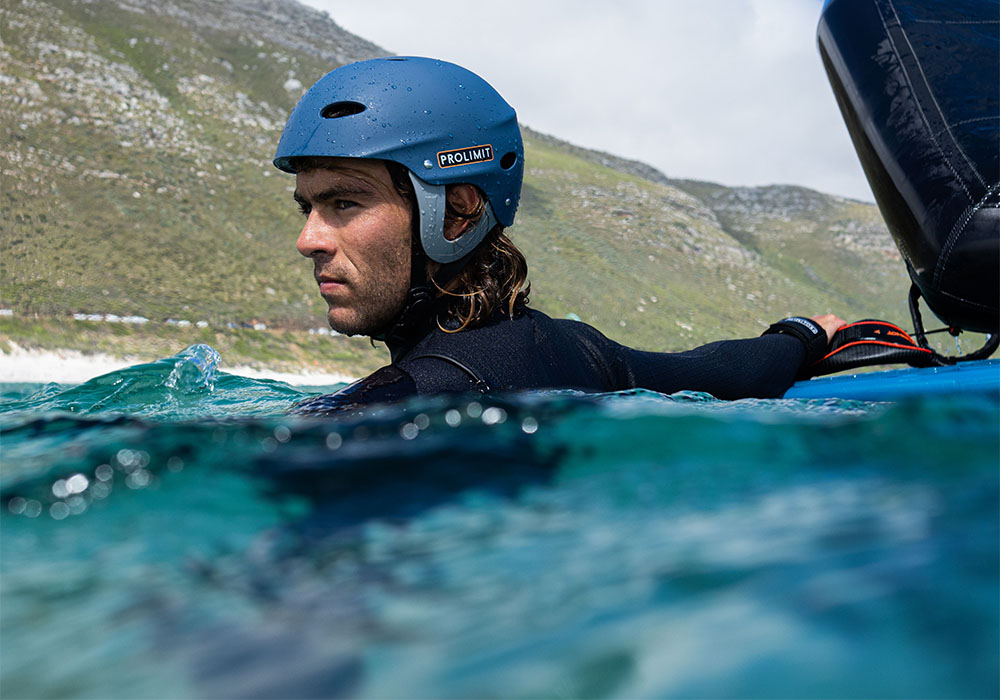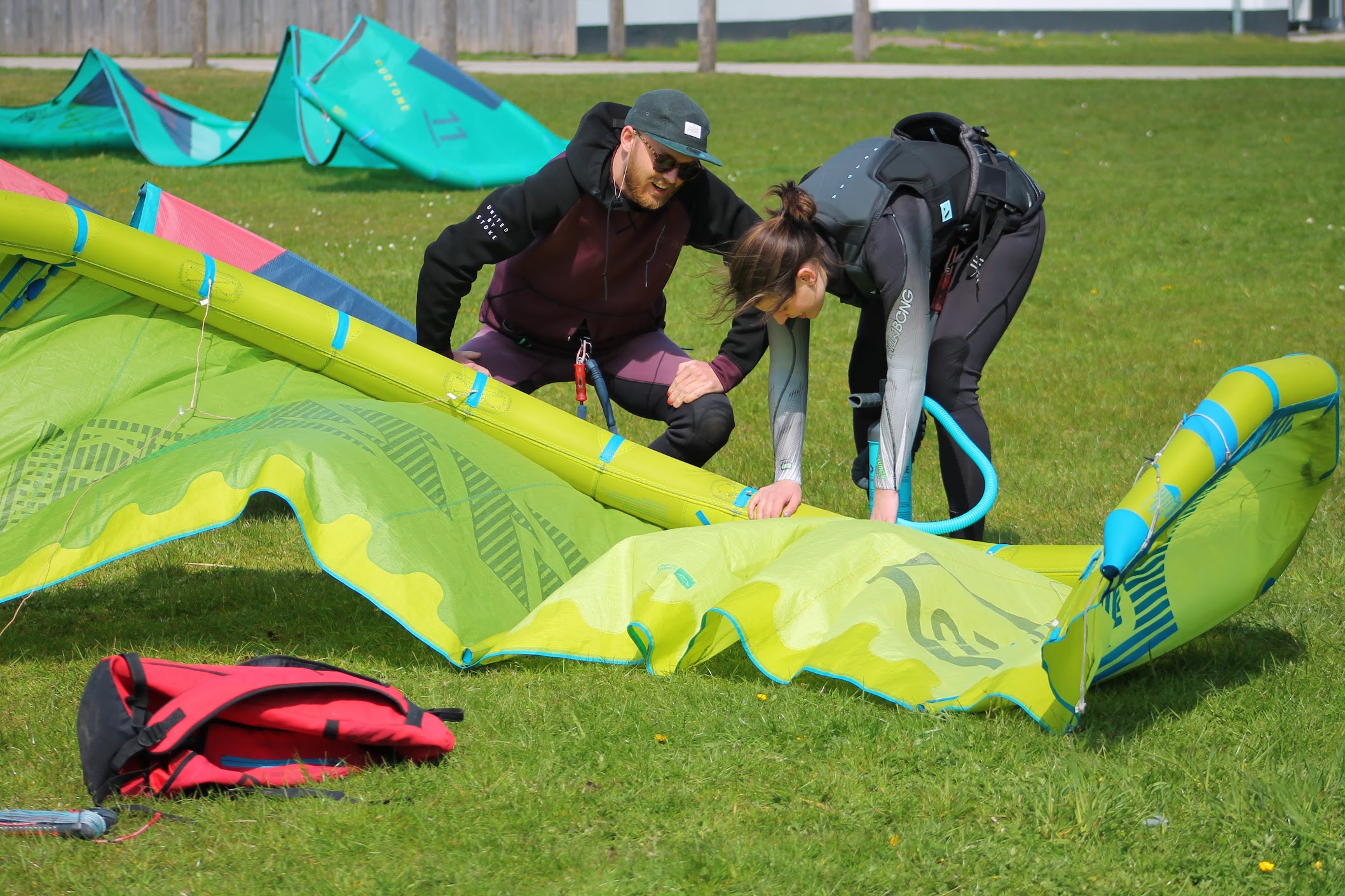Telstar Surf blog
Safety while kitesurfing
The 6 best tips for safe kitesurfing
Kitesurfing is a sport where the adrenaline is bound to rush through your body. The fact is, however, that kitesurfing is not entirely without risk. Therefore, it is important to know how to kitesurf safely.
The risks of kiting can of course be reduced, but they are mostly in your own hands. A few simple guidelines will make it safer not only for yourself, but most importantly for the other kitesurfers on the water.
With the following tips and tricks, we will help you make it safer for you and others on the water!


Tip 1: Take kitsurfing lessons
Going out on the water without a kitesurfing lesson is asking for trouble. A kitesurfing lesson is the best investment you can make in the first place. During a kite lesson, you will learn all about bar safety systems and how the kite works, among other things. Take kitesurfing lessons from a qualified and experienced instructor before practicing on your own. Learn the basics of kitesurfing, such as how to control the kite, safety procedures and wind knowledge. This will ensure that both you and fellow kiteboarders return home safe and whole.
Tip 2: Find the space
Stay away from the shore and other kitesurfers. Sure, it's cool to still show off your moves right by the shore. But consider the consequences if things go wrong one day. Always keep a safe distance from other kitesurfers, swimmers and boats. Respect kite and right of way rules and be mindful of other water users. In return, do stay near other kitesurfers. In case of emergency, they can help you. Other kitesurfers can also help you when you have lost your board.
Kitesurfing is not allowed everywhere. Go kiting at designated spots so you don't endanger windsurfers and swimmers.


Tip 3: Wear an impact vest
It's a no-go for some people, but a kitesurfing impact vest is very important to wear in many cases! This is for two reasons:
- Protection: While kiting, an accident is in a small corner. So it can just happen that you go down hard. This often results in bruises or broken ribs. An impact vest catches the impact/clap so you go home with less or no injuries. Very safe in other words!
- Buoyancy: Another advantage of impact vests is that they provide a small amount of buoyancy. In situations like the wind suddenly dropping or a small break, this little bit can still make all the difference. Note, however, that this buoyancy is far from equal to that of a flotation vest.
'The best tips for a safe kite session'
Tip 4: Wear a kite helmet
Wearing a kitesurfing helmet is not a cool choice, but a wise one. It protects your head from potential dangers while kitesurfing, such as unexpected crashes when you fall off your board or the kite suddenly shoots forward. The helmet prevents your head from hitting the surface of the water, the board or other objects, significantly reducing the risk of head injuries, including skull and brain injuries. In addition, the helmet provides extra protection in crowded kitesurfing areas, where you may accidentally come into contact with other kitesurfers or water sports enthusiasts. If this happens, the helmet helps protect your head from any contact with other people or their equipment.
In short, wearing a kitesurfing helmet is a wise choice to protect yourself from various risks and potential dangers while kitesurfing.


Tip 5: Keep an eye on the weather
Pay close attention to the weather before you go kiting. Be aware of changing weather conditions. For example, it can turn over or wind gusts can suddenly appear and surprise you. But also keep a close eye on the weather while kiting, it can change just like that. Kitesurf only in conditions suitable for your skill level.
There are several websites to keep an eye on the weather. The most widely used and reliable are windfinder and windguru.
Tip 6: Maintain your kitesurfing gear
Besides all that, here's another very important tip, which is: maintain your kitesurfing gear properly. From rinsing your bar and checking the lines to storing your kite neat and dry, it's all part of the job!
By maintaining your kitesurfing gear properly, you ensure that it remains safe and reliable. Inspect regularly for any wear, damage or loose parts. Detecting and fixing problems before you hit the water will help prevent accidents and injuries.


Conclusion: safety during kitesurfing
In this blog, you have read about several measures you can take to keep yourself and others safe on the water. By following these tips, you can make sure that everyone goes home safe and sound and can continue to enjoy the kite sport. Do you have doubts about what you can and cannot do at a certain spot? Talk to one of the spot managers of the NKV or a local kiter.
